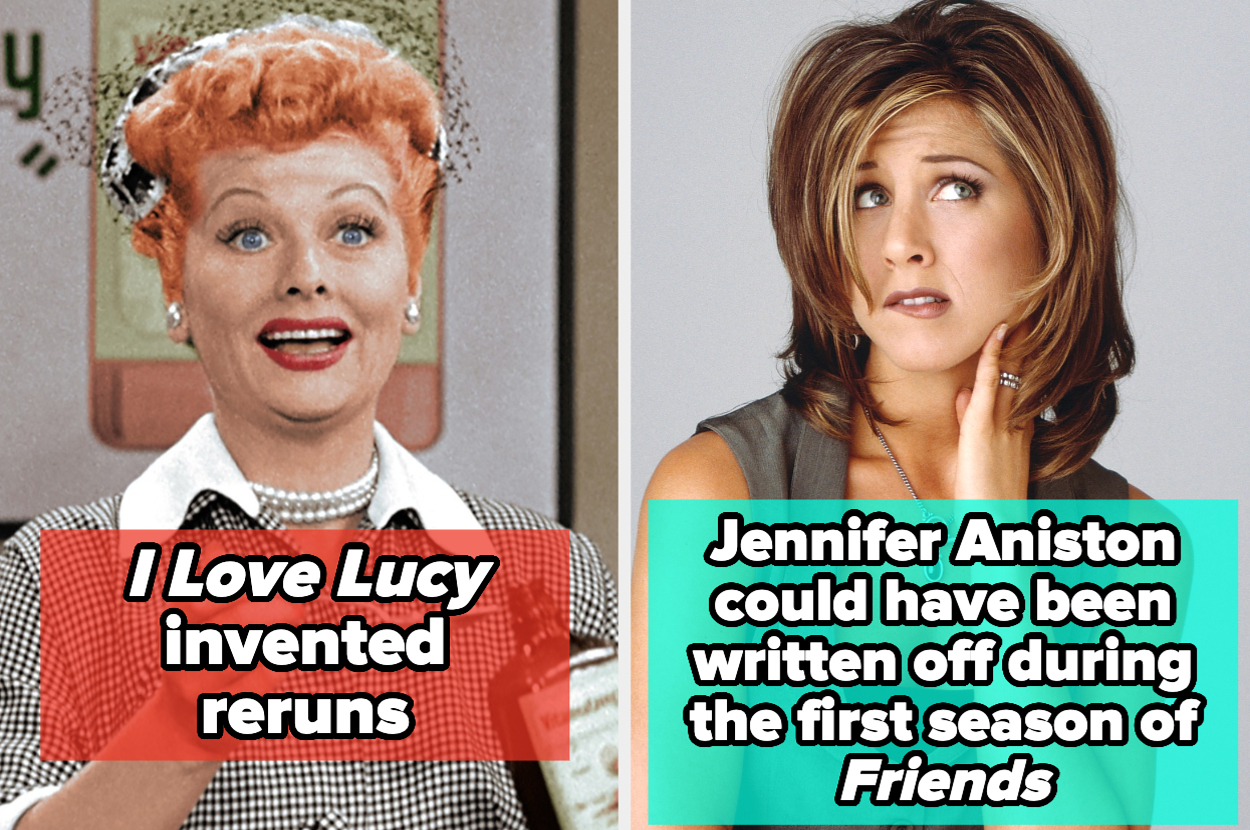Entertainment
32 Shocking Facts About Classic TV Shows That Will Change Your Perspective

32 Vintage TV Show Insights That Will Change Your Perspective
Prepare to be amazed by these fascinating nuggets from classic television history that may just shift how you perceive beloved shows.
- Sitcoms date back further than many realize; the first American sitcom, Mary Kay and Johnny, debuted in 1947, showcasing a couple sharing a bed and featuring a pregnant character.
2. Gertrude Berg was not just the star of The Goldbergs; she was the brain behind it, crafting the series and penning every episode. The show aired from 1949 to 1956 after running as a successful radio program for nearly two decades.
3. The Goldbergs has the distinction of being among the first TV shows to transition to film, with a movie featuring its original cast released in 1950.
4. I Love Lucy revolutionized television, introducing the concept of reruns due to Lucille Ball’s maternity leave. The show’s reruns were smashing hits, largely because they were filmed on quality 35mm film rather than poor kinescope.
5. Most fans picture the iconic heart and satin intro, but that wasn’t the original. The show first featured animated sequences, which were replaced by the familiar intro during reruns in 1958.
6. Vivian Vance and William Frawley were considered for a spin-off as their characters, but Vance declined, causing a rift between the two that reportedly never healed.
7. Lucille Ball’s next venture, The Lucy Show, broke new ground by featuring a divorced character well before it became commonplace on TV, a decision influenced by network concerns over audience reception.
8. In a historic moment for television, Leave It to Beaver became the first show to depict part of a toilet, albeit only the tank. The actual toilet bowl was deemed too controversial.
9. Despite its reputation, The Honeymooners only lasted one season with 39 episodes, in part due to its airing at the same time as the wildly popular Perry Como Show.
10. Ricky Nelson of The Adventures of Ozzie and Harriet is credited as television’s first teen heartthrob, and his popularity contributed to the show’s incredible longevity across 14 seasons until surpassed by The Simpsons.
11. Interestingly, Ricky Nelson, whose real name is Eric, loathed the name “Ricky” and later changed it to Rick.
12. Carl Reiner originally envisioned The Dick Van Dyke Show for himself, though it eventually morphed into a show based on his life. The pilot, Head of the Family, failed, but Reiner’s vision found success by casting Dick Van Dyke in the lead role.
13. Johnny Carson was nearly cast as Rob Petrie in The Dick Van Dyke Show but ultimately lost the part to Van Dyke, who had impressed producers with his Broadway performances.
14. The Dick Van Dyke Show was also groundbreaking in its portrayal of a Black couple as middle-class suburbanites in 1963, contrasting sharply with then-current racial stereotypes in television.
15. Al Lewis, famed for his role as Grandpa on The Munsters, was only 41 when the show debuted, even younger than his on-screen daughter, Yvonne De Carlo.
16. The Addams Family, inspired by a New Yorker comic strip, gained character names specifically for the TV adaptation, nodding to its creator, Charles Addams.
17. Both The Munsters and The Addams Family aired concurrently for two seasons from 1964 to 1966, marking a notable chapter in TV history.
18. Rowlf the Dog achieved fame as the first Muppet on The Jimmy Dean Show, captivating audiences nationwide starting in 1963.
19. The iconic theme song for The Flintstones wasn’t introduced until the third season; before this, an instrumental jazz piece set the tone.
20. Pebbles Flintstone was originally meant to be a boy named Fred Jr., but executives pushed for a female character to market a doll, leading to a significant alteration in the show’s trajectory.
21. While The Twilight Zone is known for its distinctive theme, the first season used a different melody, replaced in the second season due to network executives’ dissatisfaction.
22. Rod Serling’s on-camera introductions didn’t start until the second season, as originally he only appeared at the end to tease future episodes.
23. All in the Family made history by being the first show to audibly feature a flushing toilet, breaking social taboos of the time about bathroom humor.
24. Dallas is often remembered for its cliffhangers and serialized storytelling, paving the way for future primetime soaps, making it a cultural phenomenon.
25. The “Who Shot J.R.?” episode reached astonishing viewership, with 350 million people tuning in at its peak, showcasing the power of serialized drama.
26. Cheers was nearly canceled after a rocky first season but eventually found its stride, thanks to favorable reviews and a strong word-of-mouth buzz.
27. The Golden Girls was born out of a comedic skit performed by Doris Roberts and Selma Diamond, leading to a show centering on older women that redefined sitcom norms.
28. The producers initially sought Bette Midler’s song as the theme for The Golden Girls, but when it proved too costly, they opted for the now-beloved “Thank You For Being A Friend.”
29. The character of Elaine Benes in Seinfeld was prompted by NBC executives wanting to diversify the cast, which led to the introduction of a strong female character.
30. The creation of Living Single was inspired by a moment from Spike Lee’s Jungle Fever, leading to a collaboration that aimed to authentically represent Black women’s experiences.
31. Before landing Rachel on Friends, Jennifer Aniston starred in a failed CBS sitcom. The cancellation plan for her old show ingeniously allowed her to take on the role that would define her career.
32. Lastly, the term “shipping,” referring to fan-backed relationships, originated from The X-Files fandom, where viewers passionately advocated for Mulder and Scully to become a couple.
These hidden details offer a fresh lens through which to view classic television shows, shedding light on the creative struggles and societal shifts that shaped our screens.
